webdesignlistings.org
Utilising human-review and AI to become the most thorough website review service for web design businesses
★ Get your own unique FAQ + Selling Points on your profile page
★ be seen by 1000s of daily visitors and win new business
webdesignlistings.org Ephemeral Miniblog
The Button That Found Its Backbone
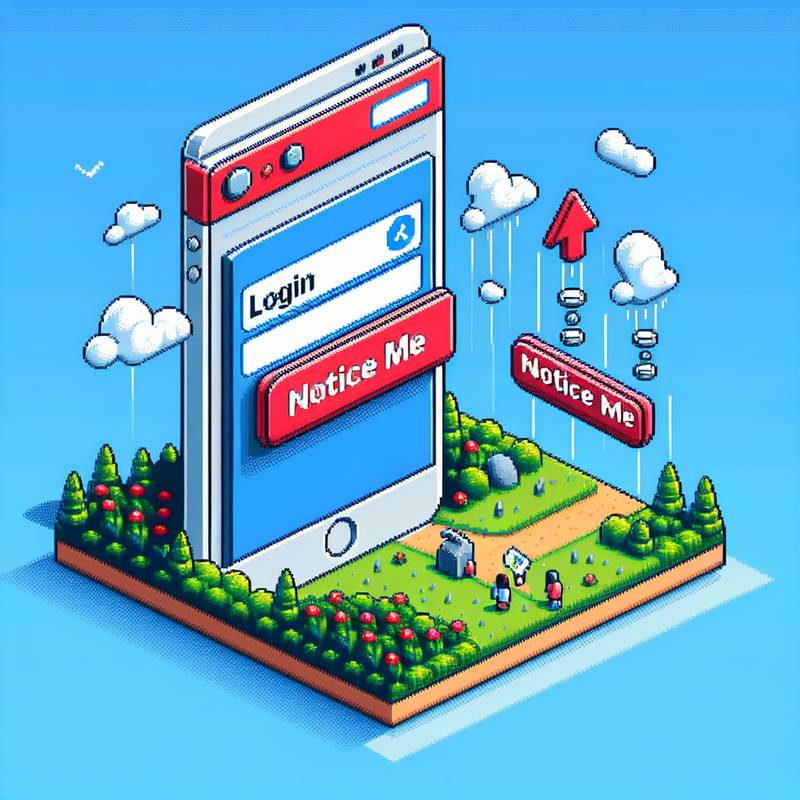 The login button… aye, that wee devil. Used to be a tiny blue link, hiding in the top-right corner like it owed folk money. People'd squint, hover about the page like they were trying to find Wally, click six wrong things before rage-quitting. It was like a bad first date—it just didn't want to be found.
The login button… aye, that wee devil. Used to be a tiny blue link, hiding in the top-right corner like it owed folk money. People'd squint, hover about the page like they were trying to find Wally, click six wrong things before rage-quitting. It was like a bad first date—it just didn't want to be found.Then someone, probably fuelled by coffee and a sudden desire not to be hated, made it big and red. Not angry red, but notice me red. Bold. Clear. Like a fire alarm for productivity. And get this—it said Login instead of something daft like Access Portal.
The moment that button changed, bounce rates dropped like a stone. Conversions? Through the roof. It was like flipping a switch in the users’ brains—Oh! There it is! All because someone decided not to be clever, but to be clear.
That’s the magic of UX—noticing the daily irritations and fixing them without fanfare. Like good plumbing. You don’t see it when it works, but by god, you know when it doesn’t.
Loading...
Speed Is Cute Until Your Site Freezes
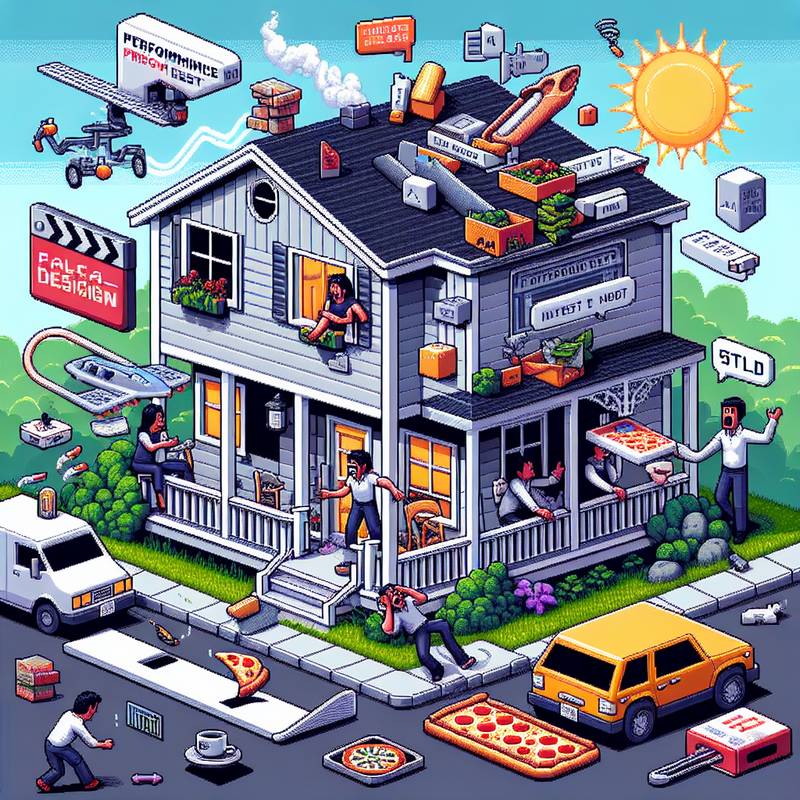 You ever try to look good while running late? That’s what building a stylish site that loads like molasses in January feels like. I love a drop shadow and hover effect as much as the next over-caffeinated CSS tinkerer, but if your homepage takes longer to load than it does for me to locate my keys in my bag (read: eternity), you’ve already lost.
You ever try to look good while running late? That’s what building a stylish site that loads like molasses in January feels like. I love a drop shadow and hover effect as much as the next over-caffeinated CSS tinkerer, but if your homepage takes longer to load than it does for me to locate my keys in my bag (read: eternity), you’ve already lost.Speed gets users in the door. Style gets them to stay and admire the curtains. But if page load time means I could’ve ordered a pizza in the meantime, I’m out—and probably ordering that pizza. The sweet spot is performance-aware design: prioritize fast loading, then layer on visual treats that don’t bloat the whole experience like it just mainlined 200kb of parallax.
Your design’s not a museum piece—it’s a tool. Fancy won’t save you if users never make it to the content. Trim the fat, compress the images, and ask every animation if it really, truly deserves a seat at the table.
Loading...
Quick Fix: Stop Making It Dance
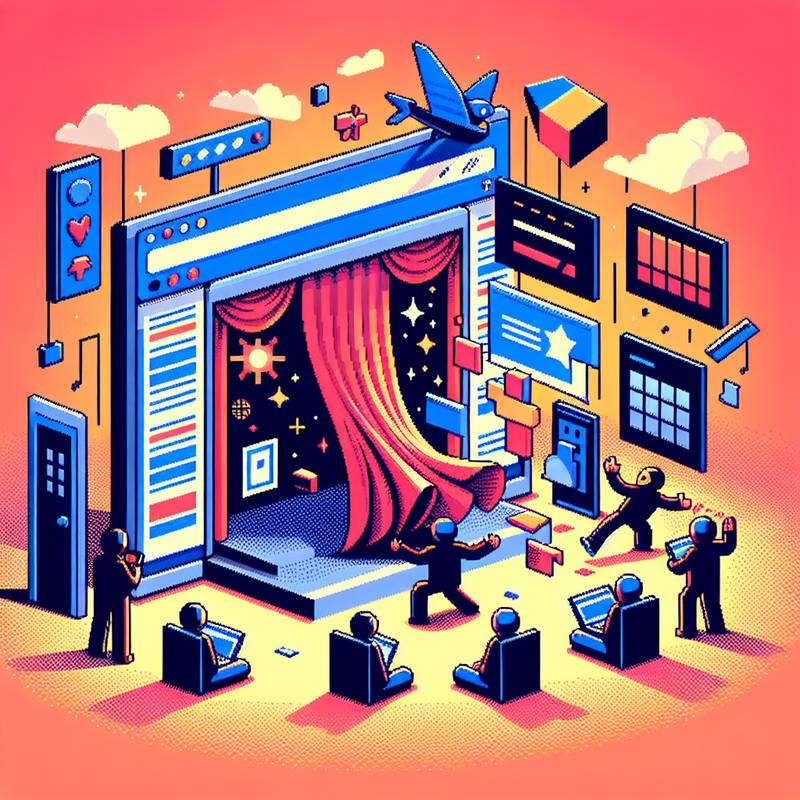 The typical web designer, besotted with their own cleverness, often falls victim to the siren call of over-animation. You’ve seen it—the page loads with the languid, nauseating drip of sliding panels and slow-fade text, as if one's bandwidth were a theatre curtain. The user, that impatient, besieged hominid, merely wants to find a phone number, a place to click, a point of purchase—and instead is made to wait for the digital equivalent of interpretive dance.
The typical web designer, besotted with their own cleverness, often falls victim to the siren call of over-animation. You’ve seen it—the page loads with the languid, nauseating drip of sliding panels and slow-fade text, as if one's bandwidth were a theatre curtain. The user, that impatient, besieged hominid, merely wants to find a phone number, a place to click, a point of purchase—and instead is made to wait for the digital equivalent of interpretive dance.The fix? Brutal minimalism. Not minimalist aesthetics—though they have their place—but a paring back of all transitional effects to near-invisibility. Functional invisibility, if you like. A menu should not ‘arrive’; it should be there. Text should be readable without the chore of watching it perform.
Design isn’t theatre. It’s signage. Good signage doesn’t pirouette. It points.
Loading...
From Designer to Developer: A Careful Misinterpretation
 Designers whisper elegant dreams into figma files—shadows here, gradients there, a button that implies deep emotional intelligence—and then hand these dreams to developers, who promptly stop whispering and start muttering about browser compatibility. This delicate translation act is like converting a sonnet into semaphore: poetic intent remains, but someone always loses an eyebrow.
Designers whisper elegant dreams into figma files—shadows here, gradients there, a button that implies deep emotional intelligence—and then hand these dreams to developers, who promptly stop whispering and start muttering about browser compatibility. This delicate translation act is like converting a sonnet into semaphore: poetic intent remains, but someone always loses an eyebrow.Each pixel the designer places is a promise that must be kept in code. Typography? To a developer, that’s not a font—it’s a war with spacing, ems, rems, and the whims of mobile Safari. And that delightful hover effect? It triggers a crisis of identity in Firefox.
Yet when it works—when a design becomes a living, breathing DOM element—it’s alchemy. Good communication is essential: designers must understand that a violet drop shadow at 17% opacity has behavioural implications. Developers, in turn, must realise that 'close enough' is not the preferred unit of fidelity.
From designer’s whim to developer’s markup, the journey is perilous. But when handled with mutual respect and a shared loathing for IE11, it can be glorious.
Loading...
Homepage: The Velvet Entrance Hall of the Internet
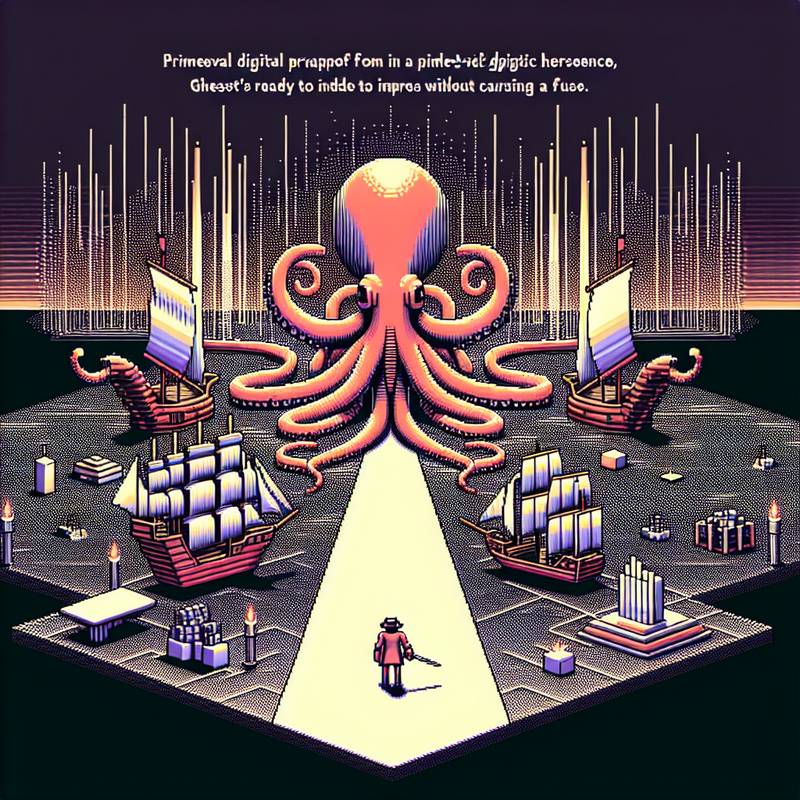 Designing a homepage is like trying to dress a magic octopus for an intergalactic banquet—every limb needs to shine without slapping your nan in the face. It’s the front door of your digital soul, the first blip on a visitor’s radar before they decide whether your site’s a cosmic dream or a soggy potato in web form.
Designing a homepage is like trying to dress a magic octopus for an intergalactic banquet—every limb needs to shine without slapping your nan in the face. It’s the front door of your digital soul, the first blip on a visitor’s radar before they decide whether your site’s a cosmic dream or a soggy potato in web form.Start with hierarchy. Big, bold intro—give them the why before the what. Hero images that flirt with the edges of imagination, copy tighter than a tightrope made of laser beams. Guide eyes like a velvet-handed pirate steering a ship through luminous fog. Think contrast, whitespace, and rhythm—like Bauhaus meets a disco ball.
Navigation? Sleek as a baby otter in a tux—intuitive, uncluttered, and laced with subtle curiosity. CTAs whispering come-hither spells, not bellowing like a goat on roller skates.
And make it fast. No one wants to wait ten seconds for your homepage to load unless it grants them eternal youth or free biscuits.
Loading...
Speed vs. Style: The Glamorously Frustrating Trade-Off
 Sleek fonts, high-res images, subtle animations—your website may look like a Bond film opening sequence. But if it loads slower than your nan on dial-up, your users are already gone. Style is crucial—it builds trust, sets tone, and can make a good impression faster than a caffeine-fueled TED Talk speaker. But if performance takes a backseat, style becomes self-sabotage in a trench coat.
Sleek fonts, high-res images, subtle animations—your website may look like a Bond film opening sequence. But if it loads slower than your nan on dial-up, your users are already gone. Style is crucial—it builds trust, sets tone, and can make a good impression faster than a caffeine-fueled TED Talk speaker. But if performance takes a backseat, style becomes self-sabotage in a trench coat.The trade-off is real: high-end visuals guzzle resources. You want gradients? That’s cool. You want parallax scrolling and videos that autoplay but don’t mute? That’s a war crime. You can have slick design, but it must be optimized like an Olympic gymnast—flexible, lightweight, and ideally not held together by duct tape and desperate hope.
The solution is balance: use techniques like lazy loading, minification, and smarter asset management. Make beauty that flies, not beauty that crashes your browser.
Because speed is invisible until it’s missing. Style dazzles, but performance retains. And you need both—like peanut butter and not dying.
Loading...
Too Many Buttons, Not Enough Sense
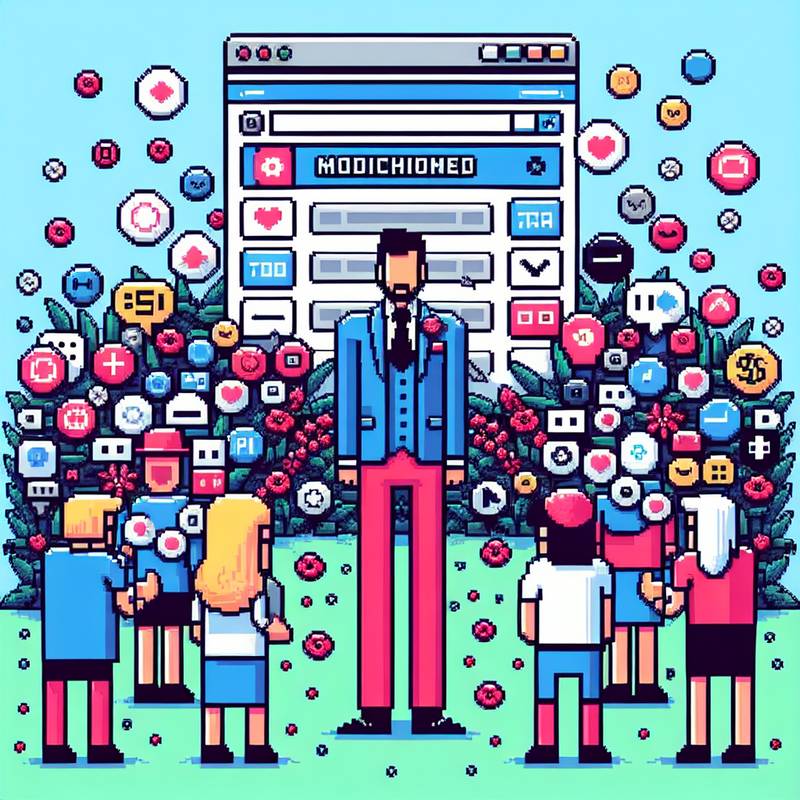 Your homepage has more buttons than an overenthusiastic blazer at a wedding. And just like that blazer, too many calls-to-action (CTAs) cause confusion—where should the user look? What should they do? Are they buying a thing or signing up for a newsletter or... joining a cult?
Your homepage has more buttons than an overenthusiastic blazer at a wedding. And just like that blazer, too many calls-to-action (CTAs) cause confusion—where should the user look? What should they do? Are they buying a thing or signing up for a newsletter or... joining a cult?The common error here is overloading the landing page with multiple, competing actions. It’s like walking into a shop and the assistant shouting five offers at you before you’ve even looked up.
The quick fix: prioritise one primary CTA. Just one. Make it clear, make it obvious, and make everything else support it—whether it's signing up, buying, or learning more. If there's secondary info, tuck it further down. Think of your homepage as a friendly bouncer: there to guide people in, not scare them off with a megaphone.
Be kind to your users. Their brains are full enough. Give them an obvious next step—and they’ll actually take it.
Loading...
Design Doesn’t Have to Whisper
 Apparently, “good design” means everything has to be white, minimalist, and so clean you’re afraid to exhale near it. Because nothing screams comfort like a room that looks like it’s been evacuated for safety reasons. Somewhere along the way, people decided that the absence of personality is a design virtue. If your chair doesn’t look like it was assembled from anxiety and regret, it’s probably not “modern” enough.
Apparently, “good design” means everything has to be white, minimalist, and so clean you’re afraid to exhale near it. Because nothing screams comfort like a room that looks like it’s been evacuated for safety reasons. Somewhere along the way, people decided that the absence of personality is a design virtue. If your chair doesn’t look like it was assembled from anxiety and regret, it’s probably not “modern” enough.They say good design is about simplicity. Right. But simplicity isn’t about stripping out all the character until you’re left with a Scandinavian waiting room, is it? It’s about clarity, not clinical sterility. There’s a difference between well-considered and utterly soulless.
Form follows function, they said. But these days it follows Instagram engagement. If you can’t sit on it, eat at it, or find the drawer handle without spiritual guidance, what’s the point?
Here’s a shocking twist: good design might involve colour. Texture. Maybe even evidence that a human being lives there. Wild, I know.
Loading...
Cut the Clutter or Cut Your Throat
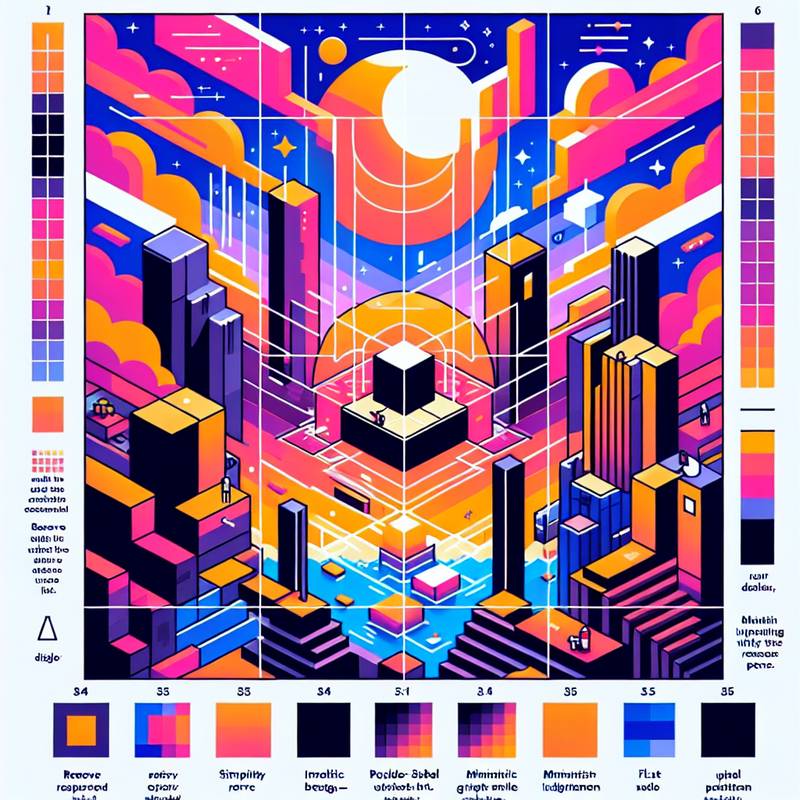 Ye dinnae need tae dazzle wi' fireworks when clarity slaps harder. Strip it doon. That’s the rule—the one. The rest’s baubles. Fancy gradients, gobbledygook copy, buttons that vanish like wee daft ghosts—kill it all. A design’s job is tae serve, not to perform.
Ye dinnae need tae dazzle wi' fireworks when clarity slaps harder. Strip it doon. That’s the rule—the one. The rest’s baubles. Fancy gradients, gobbledygook copy, buttons that vanish like wee daft ghosts—kill it all. A design’s job is tae serve, not to perform. See, the user’s no some daft wee lab rat. They're navigating life, heavy wi’ its own shite, and ye’ve got one shot tae offer the simplest path through the chaos. If it looks clever but makes a mind stumble, it’s a failure. Simplicity’s no just lookin’ sleek—it’s empathy, discipline, refusal tae indulge yer ego.
Make it obvious. Make it work the same way every time. Make every pixel justify its presence or axe it wi’ pleasure. You want impact? Then design like absence—like quiet—and let the user feel like a genius, not like someone wading through syrup.
The rule? Remove until it breaks—then step back one. That’s clarity. That’s power.
Loading...
Common Mistake, Quick Fix: Design Chaos vs. Clarity
 Your homepage has one job: to say, “Hey, you’re in the right place!” If your site takes ten seconds to load because it’s weighed down with auto-playing videos, fifty colors fighting for attention, and more fonts than a ransom note, that’s a problem. Big mood? More like big confusion.
Your homepage has one job: to say, “Hey, you’re in the right place!” If your site takes ten seconds to load because it’s weighed down with auto-playing videos, fifty colors fighting for attention, and more fonts than a ransom note, that’s a problem. Big mood? More like big confusion.The fix is as refreshing as a mid-day nap. Simplify. Think clean layout, readable fonts, and a clear message—above the fold. Use white space like it’s your favorite throw pillow: tastefully, and to make everything else look better. And please, make your call-to-action so obvious that even your distracted cousin who still uses Internet Explorer knows what to do.
Web design isn’t about overwhelming—it’s about guiding. People should scroll because they want to, not because they’re desperately searching for a “Contact Us” button that’s been hiding like it’s in witness protection.
So, channel your inner cool aunt (hi) and tidy up your site. Your users—and your bounce rate—will thank you.
Loading...
The Cosmic Mechanics of a Homepage
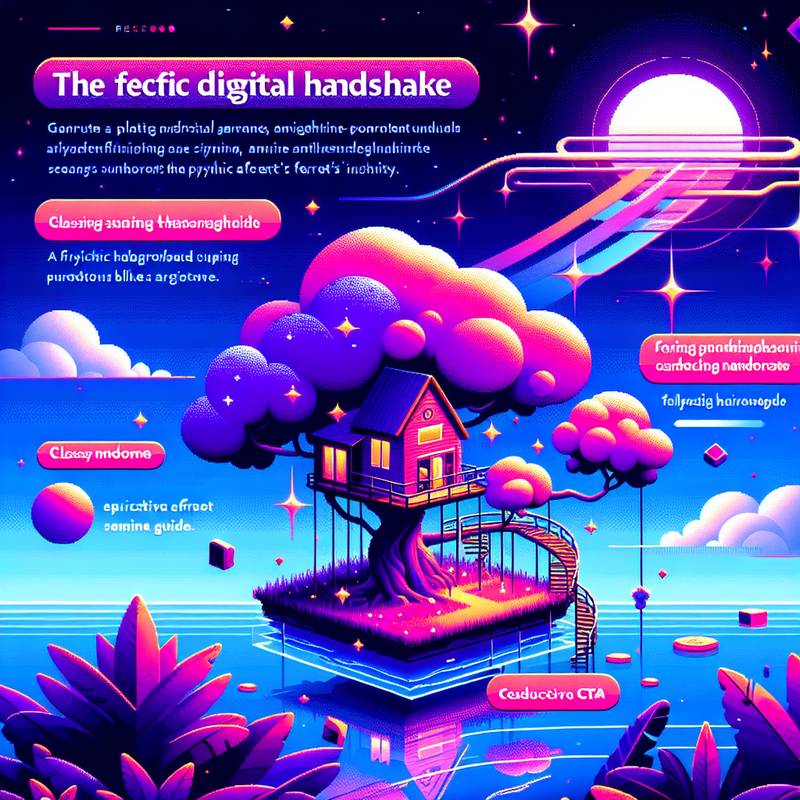 A homepage is like the front door to your digital treehouse, except your treehouse is floating in the neon mist of cyberspace and the doormat constantly morphs into lesser-known sea creatures. But it still needs to whisper: “Come in, friend, and marvel.”
A homepage is like the front door to your digital treehouse, except your treehouse is floating in the neon mist of cyberspace and the doormat constantly morphs into lesser-known sea creatures. But it still needs to whisper: “Come in, friend, and marvel.”Design it with clarity and a deliberate wink. A bold headline that flings your brand’s soul into someone’s eyeballs. Subheads that don’t drone like a bored librarian but guide like a glittery Sherpa. Navigation should be as intuitive as a psychic ferret—users should feel it, not fumble for it.
Hero images? Not just glamorous wallpaper—make them part of the story. And CTAs should be seductive candyfloss portals, not aggressive buttons shouting into the void.
Keep the scroll snappy. Every element needs a job—if it’s just loitering like a confused goblin, bin it. Sprinkle personality sparingly. You’re not building a clown car, you’re crafting the first handshake between digital you and the curious traveller.
Get it right, and they’ll stay. Get it sublime, and they’ll never want to leave.
Loading...
Stop Centering Everything Like It’s a Middle School Talent Show
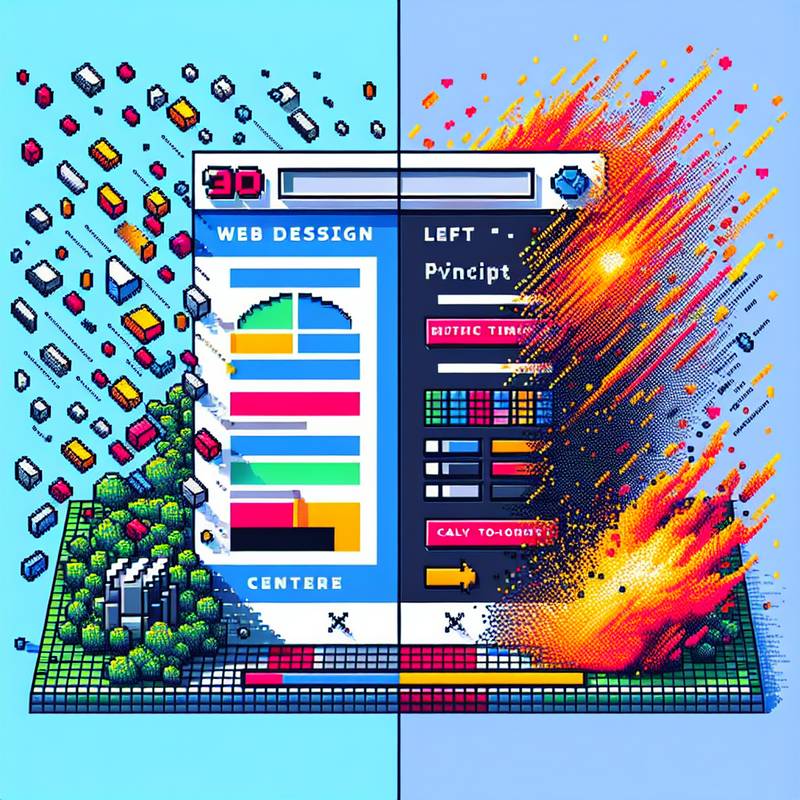 Centering all text on a webpage might seem like a cool, artsy idea—like wearing sequins to brunch—but it actually creates a mess faster than a confetti cannon in a wind tunnel. When everything’s centered, the eye has no anchor. Users have to work harder to read, and spoiler alert: they won’t.
Centering all text on a webpage might seem like a cool, artsy idea—like wearing sequins to brunch—but it actually creates a mess faster than a confetti cannon in a wind tunnel. When everything’s centered, the eye has no anchor. Users have to work harder to read, and spoiler alert: they won’t.Instead, align body text to the left. It’s not boring, it’s a kindness. Your readers can skim, scan, and absorb info without feeling like they’re on a visual rollercoaster. Keep headings bold and aligned. If you really need to center something (like a call-to-action button), go for it—but do it with purpose, not panic.
Design is like comedy: timing and balance are everything. A centered punchline? Hilarious. A centered paragraph? Exhausting. Keep the experience smooth, and your users will keep coming back—not just to find information, but to enjoy how you deliver it.
Loading...
The Diction of Design Rendered in Code
 The designer sketches a dream—serifs that speak of elegance, margins like whispered secrets, a button in just the right shade of reluctant turquoise. But dreams must be built, and that is where the developer steps in, monastic in posture, deciphering the aesthetic incantations of Figma into divs, variables, and component states.
The designer sketches a dream—serifs that speak of elegance, margins like whispered secrets, a button in just the right shade of reluctant turquoise. But dreams must be built, and that is where the developer steps in, monastic in posture, deciphering the aesthetic incantations of Figma into divs, variables, and component states.True artistry lies in this unseen conversion, where a visual language becomes a mechanical one. A mock-up implies an intention—hierarchy, rhythm, mood—and the front-end developer must serve both function and fidelity. How does a 12-pixel padding communicate ease? How does a hover state suggest invitation without grovelling?
One must listen not only to what the designer says, but what they mean. A border-radius is not merely a shape, but a tone of voice. The developer, a craftsman of invisible nuance, must subtly balance the exquisite and the executable. It is a translation not of words but of atmospheres.
At its best, the handoff from designer to developer is not a transaction, but a duet.
Loading...
The First Impression Machine
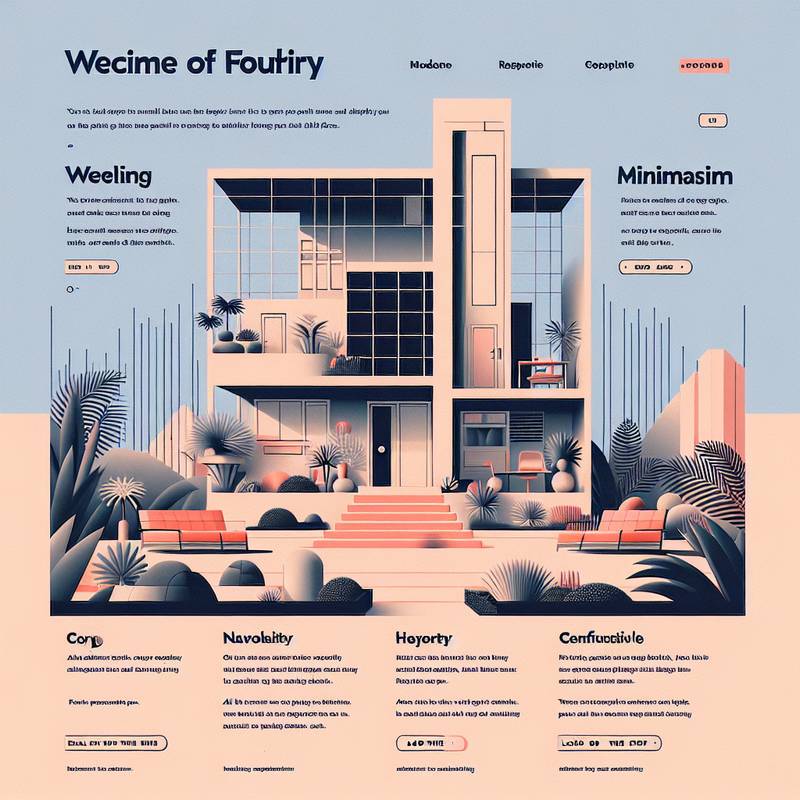 The homepage is a paradox: both the foyer and the face. It must orient, seduce, and retain—all in milliseconds. So, craft the headline like a haiku: crisp, meaningful, immediate. Navigation? Fewer choices mean faster decisions. The visitor shouldn’t need a sherpa to find your pricing or understand your offer. Drop any fatigue-inducing carousels; choose clarity over gimmick. Hierarchy is your secret weapon—use whitespace and font weight like a conductor’s baton to guide the eye. Visual hierarchy ensures your call-to-action doesn’t drown in a sea of secondary links and overly optimistic icons.
The homepage is a paradox: both the foyer and the face. It must orient, seduce, and retain—all in milliseconds. So, craft the headline like a haiku: crisp, meaningful, immediate. Navigation? Fewer choices mean faster decisions. The visitor shouldn’t need a sherpa to find your pricing or understand your offer. Drop any fatigue-inducing carousels; choose clarity over gimmick. Hierarchy is your secret weapon—use whitespace and font weight like a conductor’s baton to guide the eye. Visual hierarchy ensures your call-to-action doesn’t drown in a sea of secondary links and overly optimistic icons.Responsiveness isn’t a perk—it’s oxygen. View every element through the lens of the smallest screen. And remember: load time is mood time. A bloated homepage is a sigh in code form. Finally, copy is design. Every word competes for attention—pare back until it hurts, then check if it still communicates. When it's right, the user feels it before they know it. That’s your moment. Don’t squander it.
Loading...
The One Rule to Follow
 In the matter of design—by which I mean the noble art of making things not only function but behave with a certain panache—there exists a principle so vital, so unswervingly golden, that even Aunt Agatha would approve (and she disapproves of everything).
In the matter of design—by which I mean the noble art of making things not only function but behave with a certain panache—there exists a principle so vital, so unswervingly golden, that even Aunt Agatha would approve (and she disapproves of everything).It is this: Clarify, then amplify.
Before one reaches for the palette or flings typefaces about like confetti at a village fête, one must first achieve clarity. Understand deeply what you’re trying to say, then say it with the crispness of a valet’s morning greeting. Only once your message could be grasped by a distracted spaniel should you begin to dress it in finery.
Most missteps in design come from skipping the first dance and waltzing straight into embellishment. This leads to confusion, clutter, and the sort of chaos reminiscent of the Drones Club on a Saturday night.
So, clear first. Pretty after. Like Jeeves selecting a tie—substance, then style. In that order.
Loading...
The Hover That Listens
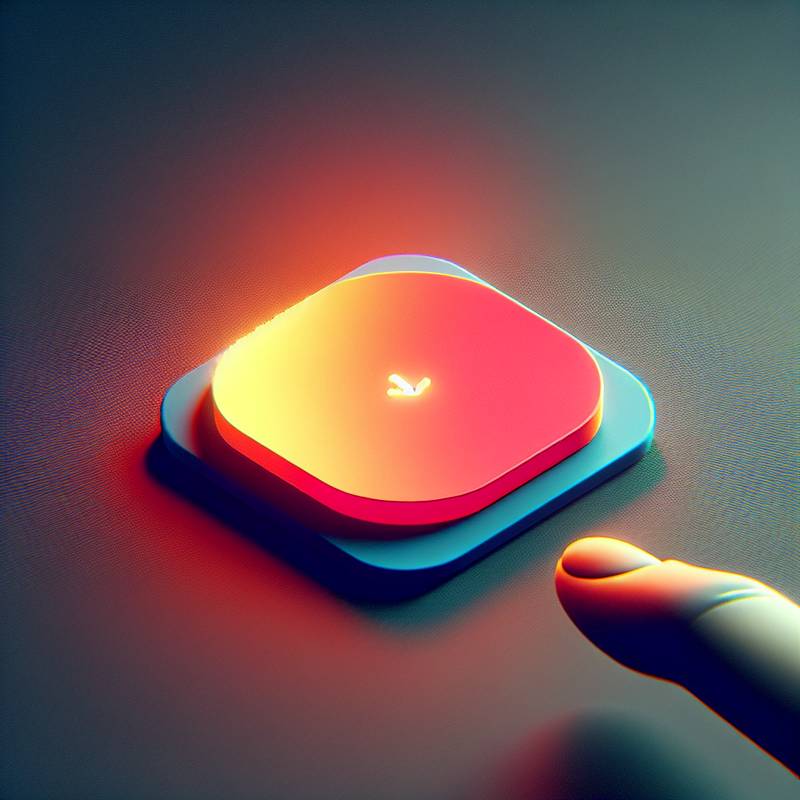 A button breathes beneath the cursor—slight expansion, a shift in hue, a brief shimmer of attention. It does not scream. It waits, living quietly in the interface. This is a hover state: a microinteraction so small it nearly escapes our notice. And yet, it is a whisper of welcome, a signal that says, yes, you are seen, yes, I am ready.
A button breathes beneath the cursor—slight expansion, a shift in hue, a brief shimmer of attention. It does not scream. It waits, living quietly in the interface. This is a hover state: a microinteraction so small it nearly escapes our notice. And yet, it is a whisper of welcome, a signal that says, yes, you are seen, yes, I am ready. In systems that shape human behavior, such gestures accumulate. A millisecond of delay, or the lack of feedback, and the user falls out of rhythm. But this—this gentle pulse—keeps the dance between person and machine in time. The experience becomes not only functional but felt.
Such microinteractions do not merely adorn—they orient. They say: You are here. You can act. And your action matters. In design, as in storytelling, meaning is not always in the grand arc, but in the turning of a page, the glance of a character, the flicker at the edge of perception. This is where trust is born.
Loading...
From Mockup to Markup
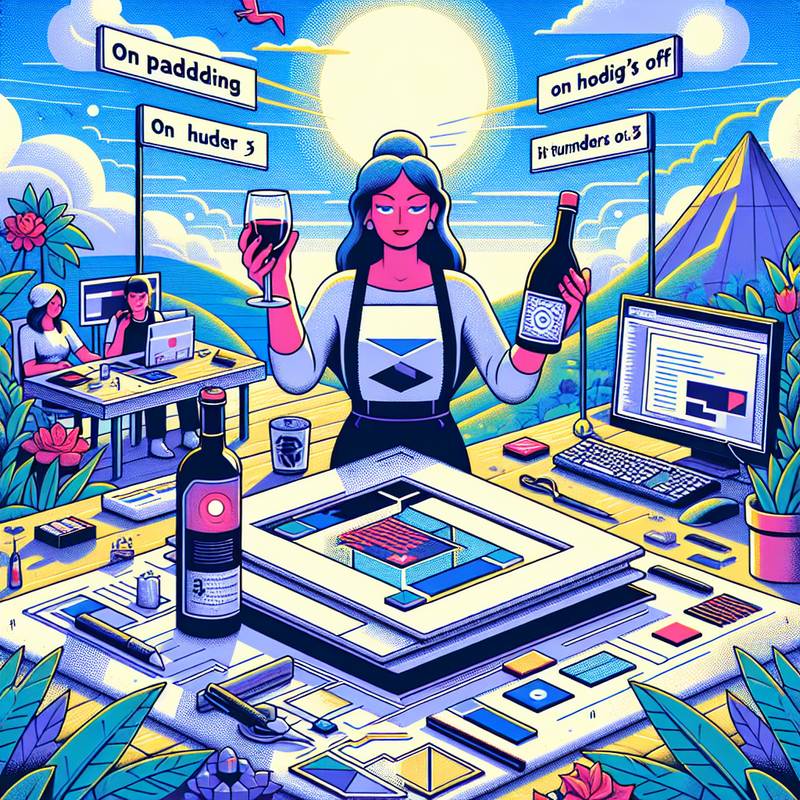 She arrived with her wireframes like a sommelier with a bottle of Bordeaux, confident and vaguely accusatory. 'The padding’s off,' she said, voice clipped, as if I had somehow insulted her ancestors with the way I implemented a button.
She arrived with her wireframes like a sommelier with a bottle of Bordeaux, confident and vaguely accusatory. 'The padding’s off,' she said, voice clipped, as if I had somehow insulted her ancestors with the way I implemented a button.From a designer’s sketchpad to a developer’s IDE, every pixel is a negotiation. That 12px margin? It's not a suggestion; it’s sacred. The font? 'Inter, 400 weight' she whispers, like a prayer. And while she hands over hover states like Tarot cards—'on hover, it turns cobalt'—I translate her prophecies into code.
It’s not enough to understand the visual language; you have to become it. The developer lives between intention and interpretation, in that mushy middle where design says “clean and modern,” and the browser says, “I’ve never heard of that color, try again.”
You eventually learn that design isn’t decoration; it’s instruction. And front-end isn’t paint-by-numbers—it’s re-assembling a mosaic after someone’s tossed the reference image into a fireplace.
That’s not dysfunction. That’s collaboration.
Loading...
The Intelligence of a Hover
 A button that breathes—expanding subtly under your cursor and pulsing ever so slightly when clicked—might seem a frivolous aesthetic. But this microinteraction plays a vital cognitive role. At the moment of engagement, the user receives immediate feedback, confirming both recognition and response. This animation doesn’t just say, “I’m here,” it proves it.
A button that breathes—expanding subtly under your cursor and pulsing ever so slightly when clicked—might seem a frivolous aesthetic. But this microinteraction plays a vital cognitive role. At the moment of engagement, the user receives immediate feedback, confirming both recognition and response. This animation doesn’t just say, “I’m here,” it proves it. In the realm of user interfaces, clarity and speed are paramount. A smooth hover state signals interactivity, reducing uncertainty. A human brain responds faster to motion than to static change; thus, a gentle animation becomes a cognitive shortcut, guiding without words. The experience is not just efficient—it is pleasing, sometimes even delightful.
Consider the alternative: a static button. Click. Pause. No animation. Did anything happen? Was it registered? Even a fraction-of-a-second doubt erodes trust. That is the brilliance of a well-crafted microinteraction—it anchors expectation, minimizes friction, and affirms the system is listening.
Such details may be tiny, but they act like neurons in a larger interface brain. And like neurons, their proper firing makes intelligence—and grace—possible.
Loading...
Postcode First, World Saved
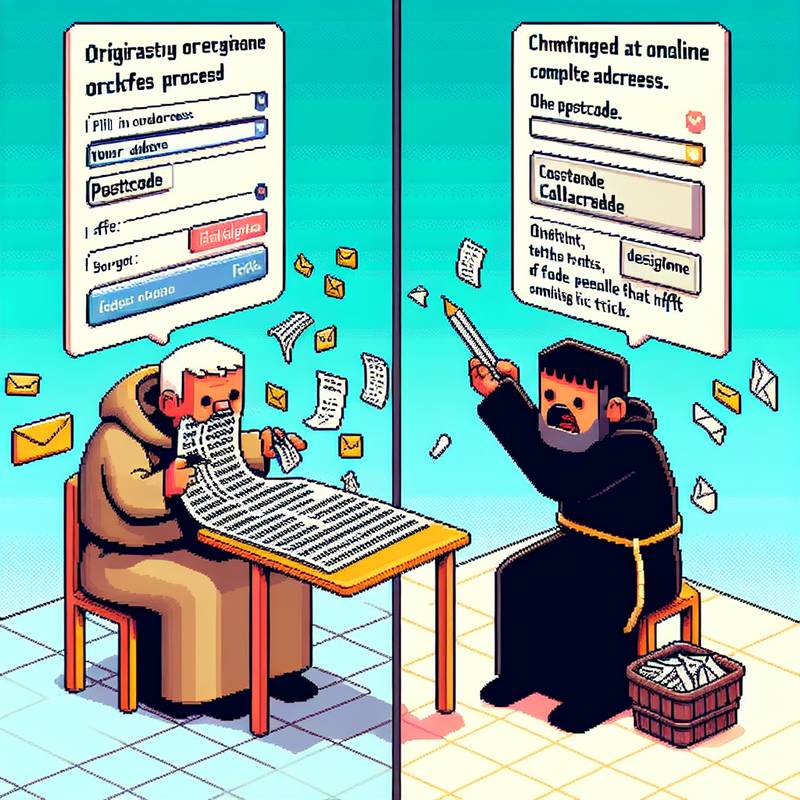 It used to be like trying to open a tin of soup with a spoon—this online checkout process. You’d get to the shipping bit, and it would say “Enter your address,” and you'd think, brilliant, until you realised it wanted your postcode last. So you’d type the whole thing, then the postcode, and the form would go, “Oh! Thanks, now I’ll fill in the rest for you!” Too late, mate. I’ve already typed it all like a medieval monk doing calligraphy.
It used to be like trying to open a tin of soup with a spoon—this online checkout process. You’d get to the shipping bit, and it would say “Enter your address,” and you'd think, brilliant, until you realised it wanted your postcode last. So you’d type the whole thing, then the postcode, and the form would go, “Oh! Thanks, now I’ll fill in the rest for you!” Too late, mate. I’ve already typed it all like a medieval monk doing calligraphy.So someone bright-eyed and not half-asleep redesigns the form. Puts the postcode field first. You type it in, press Tab, and zap—the address fields bloom all on their own like a polite magic trick. Suddenly, you’re not swearing at your keyboard or questioning your life choices.
It’s the tiniest change—just a reordering of fields—but it makes the user feel like the website actually cares for their sanity. It’s like having a mate hand you the right tool just before you chuck the thing across the room.
Loading...
The Humble Brilliance of a Great 404 Page
 You land on a 404 page. The page says, “Oops!” as if it’s embarrassed. But it shouldn’t be. A 404 page is an opportunity dressed in error code clothing. If someone ends up here, they’re lost—digitally adrift. What they need is a lighthouse, not a shrug.
You land on a 404 page. The page says, “Oops!” as if it’s embarrassed. But it shouldn’t be. A 404 page is an opportunity dressed in error code clothing. If someone ends up here, they’re lost—digitally adrift. What they need is a lighthouse, not a shrug.Start by providing clarity: a simple message explaining the page doesn’t exist or has moved. Then, offer useful escape routes—links to the homepage, popular content, or a search bar. This isn’t the time to dust off your collection of obscure puns or animation experiments. Keep it clean. Keep it helpful.
But by all means, inject personality. A bit of humour or on-brand friendliness is welcome—as long as it doesn’t obscure the exits. The ultimate goal is to turn a moment of frustration into a flash of delight. If the user leaves your 404 page smiling and headed back into your site, you've done more than fix an error. You've rewritten it.
Loading...
Minimalist Maximalism: Restraint with a Raised Eyebrow
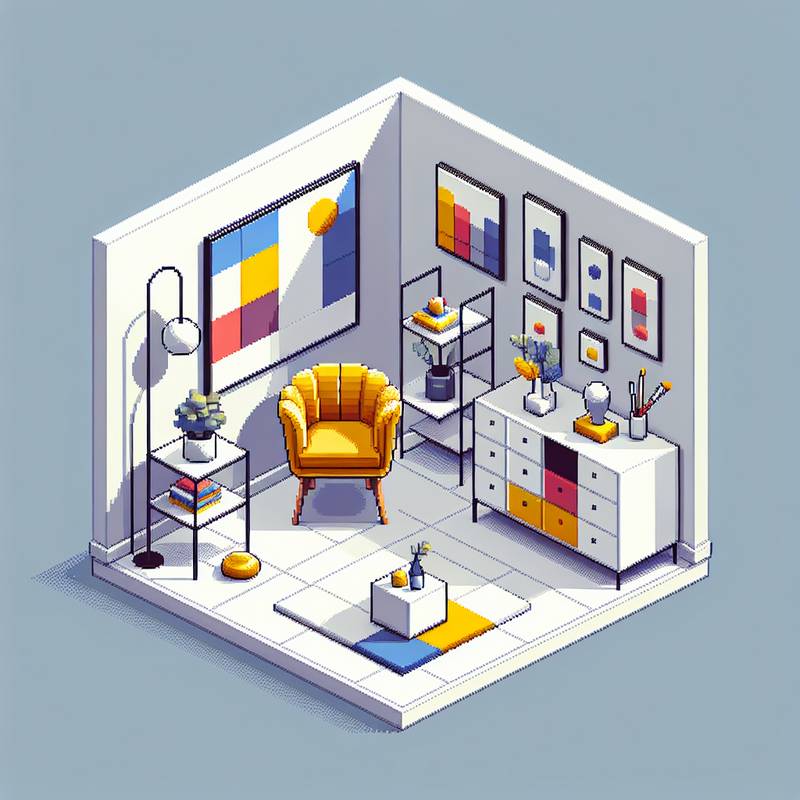 Minimalist Maximalism is the latest paradox parading down the design runway, and, heavens, it's got quite the strut. A contradiction in name, yes—but a revelation in practice. This trend marries the unfussy clarity of minimalism with the lush personality of maximalism: think bold color accents in simplified spaces, or statement art on blank walls. It’s visual economy with a flourish—decor with a discerning eye and a wink.
Minimalist Maximalism is the latest paradox parading down the design runway, and, heavens, it's got quite the strut. A contradiction in name, yes—but a revelation in practice. This trend marries the unfussy clarity of minimalism with the lush personality of maximalism: think bold color accents in simplified spaces, or statement art on blank walls. It’s visual economy with a flourish—decor with a discerning eye and a wink.Applied effectively, it resists clutter while refusing to bore. A velvet mustard chair in a room of whites and greys isn’t an accident; it’s the punctuation at the end of a well-edited sentence. Designers are learning that restraint doesn’t have to mean austerity. The trick is in the curation: fewer pieces, greater intention, and just enough drama to keep the room from applying for sainthood.
Minimalist Maximalism matters because it offers balance in a world that sways between extremes. And when done correctly, it lets a space breathe—just before it raises an eyebrow.
Loading...
From Sketch to Script: The Developer’s Burden
 The designer, that curious craftsman of hues and harmony, dreams in grids and golden ratios. He sits with his parchment—or rather, his Figma—and proclaims, “Let there be margin!” And lo, he bequeaths unto the developer a vision both divine and infernally vague. The developer, poor soul, must parse these esoteric glyphs into living code, where pixels obey none but the laws of browsers and their petulant inconsistencies.
The designer, that curious craftsman of hues and harmony, dreams in grids and golden ratios. He sits with his parchment—or rather, his Figma—and proclaims, “Let there be margin!” And lo, he bequeaths unto the developer a vision both divine and infernally vague. The developer, poor soul, must parse these esoteric glyphs into living code, where pixels obey none but the laws of browsers and their petulant inconsistencies.A button that appears as effortless grace in the designer’s mockup must be coaxed, with witchery involving CSS specificity and JavaScript enchantments, into obedience. Typography, so casually kerned, becomes a battleground of rems and line-heights. And heaven forbid the designer employ a shadow with no regard to performance or rendering nuance.
Each design flourish, each flourish of white space or flourish of type, demands a translation not just of appearance, but of interaction, accessibility, and responsiveness. Thus, the front-end developer serves not merely as implementer, but as interpreter of visual prophecy, ensuring that the elegance conceived is not lost in execution.
Loading...
Strip It Back tae the Bone
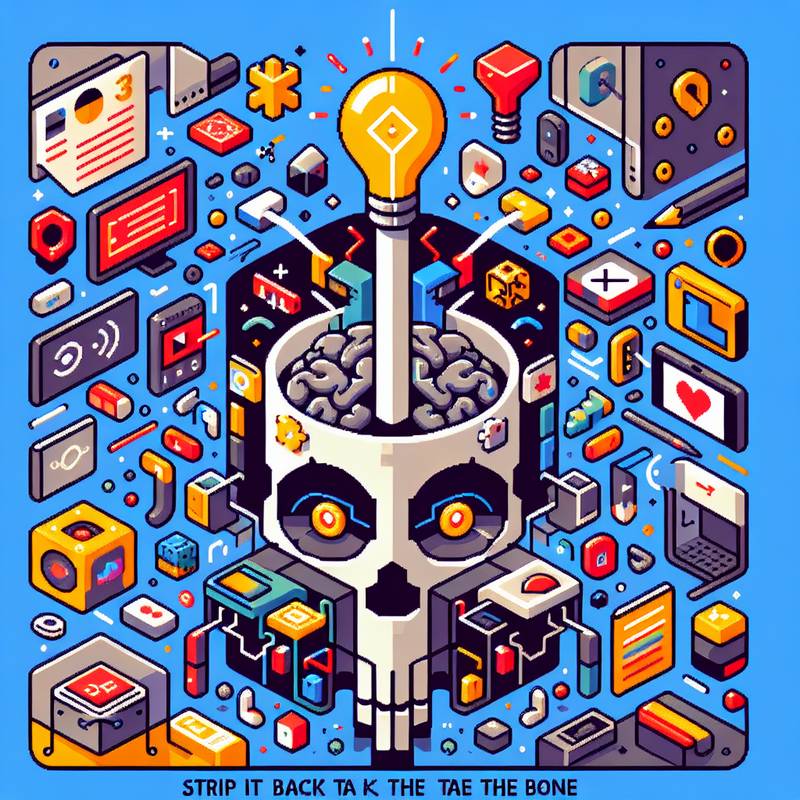 Strip It Back tae the Bone
Strip It Back tae the BoneDesign's no aboot cramming every shiny bastard feature ye can dream up into wan space. It's clarity. Brutal, unflinching clarity. The rule? Make the user feel smart. That’s it. Every pixel, every word, every daft wee interaction—it either makes the user feel like a genius or it gets booted in the bin.
Design isn’t a gallery, it’s a mirror. Folk don’t want tae admire your cleverness—they want tae see their own. Cut the fluff. Bleed it dry. Leave only what guides, empowers, enlightens. The rest? Dead weight. Strip it.
If a user needs to stop and think, you’ve already lost them. They’re back scrolling their feeds or chucking the app in the sea. But when it flows—snaps into their brain like it’s always been there—that dopamine hits. That’s design. That’s grace hidden behind dirt. You want better design? Make the people feel capable. Make them grin cos your work never got in the way.
One rule. Stick it in your soul.
Loading...
From Scroll to Code: When Design Becomes Behaviour
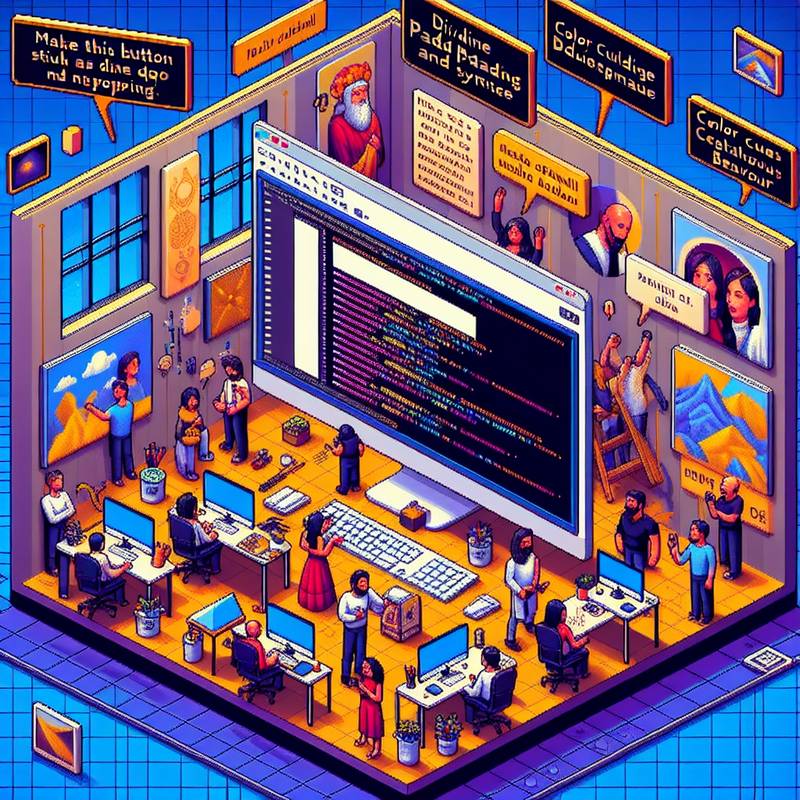 Designers hand over their Figma files like they’ve just completed a sacred scroll—'Behold, the Divine Padding. Worship its symmetry. Then developers, wide-eyed and caffeinated, attempt to translate it into code. What follows is less 'renaissance masterpiece,' more 'cubist homage.
Designers hand over their Figma files like they’ve just completed a sacred scroll—'Behold, the Divine Padding. Worship its symmetry. Then developers, wide-eyed and caffeinated, attempt to translate it into code. What follows is less 'renaissance masterpiece,' more 'cubist homage.Every design decision is a series of quiet demands—'Make this button pop,' translates to 'Give it a hover state so dramatic it wins a BAFTA. You think white space is relaxing until you're trying to replicate a 16-pixel margin that looks suspiciously like it’s 17 pixels in Safari. Suddenly you're arguing with a browser like it's cheated at chess.
But here’s the insight: design isn’t just aesthetics, it's intent. A rounded corner isn’t just friendly—it’s inviting. A colour choice isn’t just trendy—it cues behaviour. If devs understand the why behind the pixels, implementation stops being mimicry and starts being interpretation. Like jazz, but for buttons.
You’re not translating pictures into code. You’re translating feelings into functionality. And that, my friend, is design with Wi-Fi.
Loading...
The Courtesy of a Button
 A button, no larger than a thumbnail, may seem a trivial matter in the architecture of a digital experience. Yet pause a moment—hover your cursor over it. It responds, just slightly. A pulse of light, a subtle shift in shadow, perhaps an almost imperceptible motion. This is no accident. It is the designer whispering, “I’m listening.”
A button, no larger than a thumbnail, may seem a trivial matter in the architecture of a digital experience. Yet pause a moment—hover your cursor over it. It responds, just slightly. A pulse of light, a subtle shift in shadow, perhaps an almost imperceptible motion. This is no accident. It is the designer whispering, “I’m listening.”Such microinteractions are the nods and glances of polite conversation—small acknowledgments that say, “You are seen.” They root the user in a world that feels alive, rather than sterile. A button that breathes encourages the user to explore without fear. “What happens if I click?” The animation suggests not risk, but welcome.
In truth, these moments function the way a well-oiled door hinge does. You don’t notice its smoothness unless it squeaks. When it doesn’t, you glide onward, trusting the whole to be sound because the part is cared for. The dignity of design resides not just in the grand gestures, but in these tiny graces.
Loading...
Speed vs. Style: The UI Balancing Act
 You ever load a website so fast it feels like it read your mind—bam, it's there—but it looks like someone designed it in 1998 using clip art and heartbreak? Performance gets you in the door, but style keeps you from running out screaming. And developers, you know the pain: you strip down the design so it loads in under a second, but now it looks like corporate oatmeal.
You ever load a website so fast it feels like it read your mind—bam, it's there—but it looks like someone designed it in 1998 using clip art and heartbreak? Performance gets you in the door, but style keeps you from running out screaming. And developers, you know the pain: you strip down the design so it loads in under a second, but now it looks like corporate oatmeal.Here's the truth: you don’t have to pick just one. Great design doesn’t have to weigh more than your app. It’s not either fast or beautiful—it's about smart choices. SVGs over bloated images. Web fonts that don’t drag like they're stuck in molasses. Streamlined code that doesn't need a therapy session to run.
Performance is your first impression; style is your lasting one. If your site’s fast but hideous, people leave. If it's gorgeous but slow, people leave. The key is balance—like yoga for your UI. Bend it, don’t break it.
Loading...
The Art of the Homepage
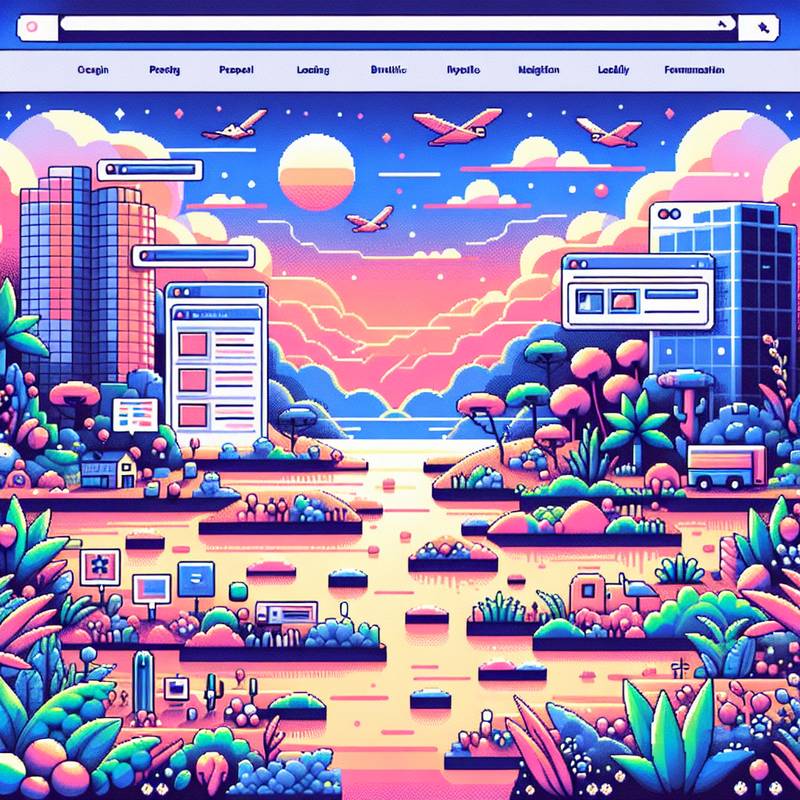 Designing a Homepage: it’s like throwing a party and hoping people turn up, stay for the nibbles, and don’t immediately leave because you’ve used Comic Sans. Your homepage has to make an instant impression – like a magician pulling a rabbit out of a hat, only less fur and more UX.
Designing a Homepage: it’s like throwing a party and hoping people turn up, stay for the nibbles, and don’t immediately leave because you’ve used Comic Sans. Your homepage has to make an instant impression – like a magician pulling a rabbit out of a hat, only less fur and more UX. First, clarity is king. Users aren’t here to solve riddles. Make the headline compelling, but not cryptic. Navigation should behave itself: clear calls to action, sensible menu labels – no hiding the contact link behind a picture of a goose. Visual hierarchy matters. Guide the eye, don’t dazzle it. You’re designing a conversation, not a fireworks display.
And load time? If your page takes longer to load than it does to brew a cup of tea, congratulations – your visitor’s already read an entirely different website.
So, don’t throw everything at the homepage. It’s not a bucket. It’s an invitation. And like any good invitation, it should make people curious enough to step inside – without tripping over the curtains of a dropdown menu.
Loading...
Your Navigation Menu is Not a Cheesecake Factory Menu
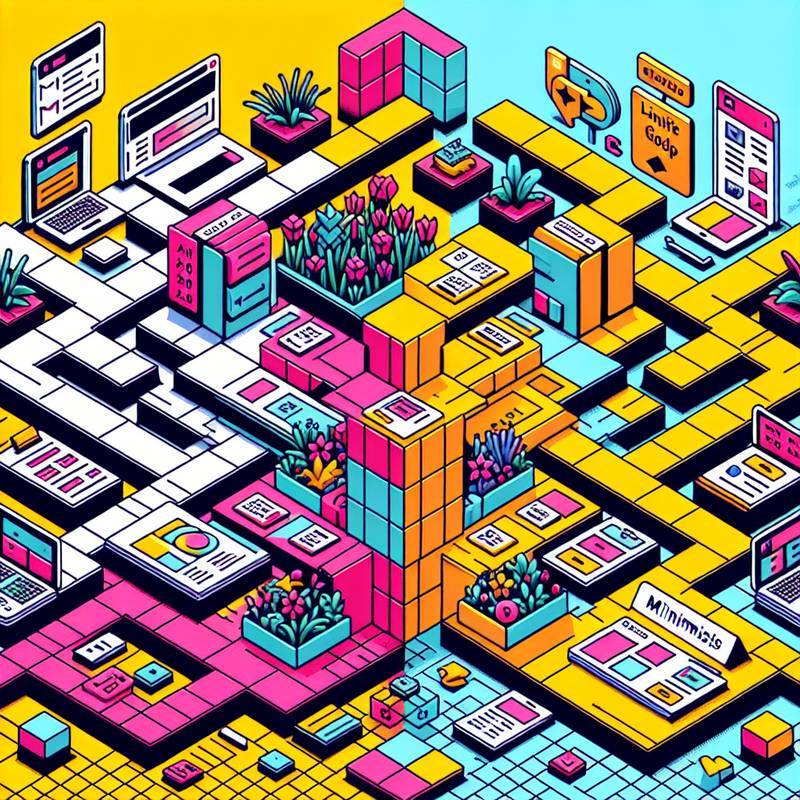 Overcrowded navigation menus are the panic rooms of the internet—so many options, no escape, and suddenly you're crying in a dropdown that leads to nowhere. Cramming every single page into the main nav? Classic rookie move. Visitors don’t want to decode your sitemap like it's the Da Vinci Code; they want to find your pricing page without completing a side quest.
Overcrowded navigation menus are the panic rooms of the internet—so many options, no escape, and suddenly you're crying in a dropdown that leads to nowhere. Cramming every single page into the main nav? Classic rookie move. Visitors don’t want to decode your sitemap like it's the Da Vinci Code; they want to find your pricing page without completing a side quest.The quick fix? Prioritize clarity over quantity. Identify your top four to six user goals and make those tabs the stars of the menu bar. Everything else? Tuck it away into a clearly labeled dropdown or footer, like an adult. Bonus points for using descriptive labels like “Services” instead of “Stuff We Do” (stop trying to be cute—there’s a time and a place).
Good navigation isn’t just about organization. It’s a power move that says, “I respect your time and your thumbs.” Laser-focused menus reduce bounce rates and increase conversions, proving, once again, minimalism is not laziness—it’s strategy in a sleek blazer.
Loading...
The Quiet Power of Minimalism
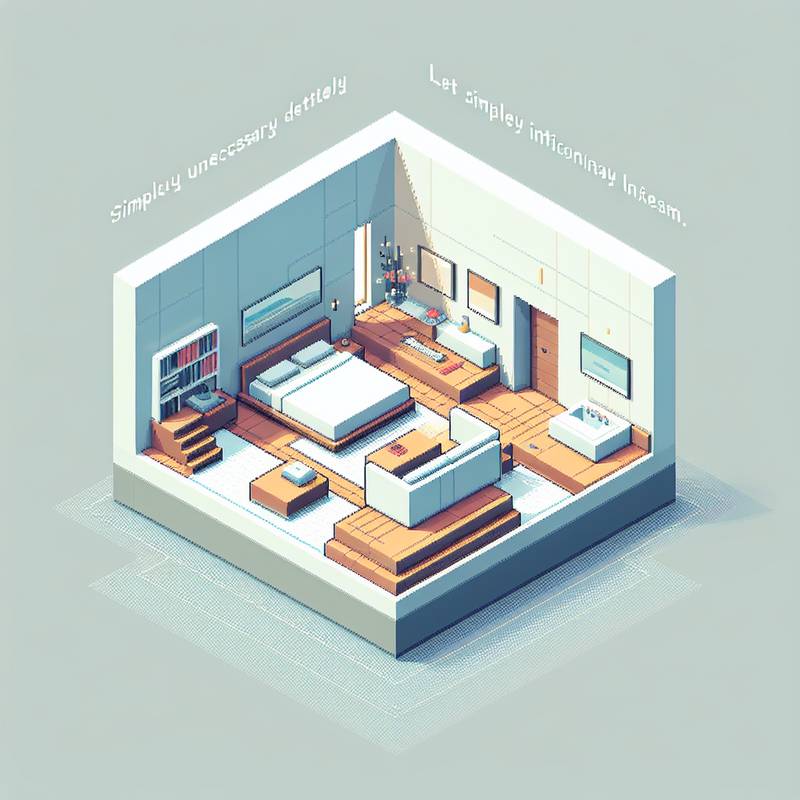 Minimalism is having another moment, and this time it brought its lawyer. Designers, weary of maximalist migraines, are smoothing edges, stripping palettes, and rediscovering the poetry of white space. It’s not just a look; it’s a brief exhale in a world ceaselessly declaiming. The trend matters because it demands intentionality—a design must now earn every pixel it occupies.
Minimalism is having another moment, and this time it brought its lawyer. Designers, weary of maximalist migraines, are smoothing edges, stripping palettes, and rediscovering the poetry of white space. It’s not just a look; it’s a brief exhale in a world ceaselessly declaiming. The trend matters because it demands intentionality—a design must now earn every pixel it occupies.Effective application? Eschew ornament for function. Let typography take the stage without tripping over its hemline. Use color not as confetti, but as punctuation. Minimalism is not the absence of ideas; it’s the quiet confidence to know which ones deserve the spotlight.
In user interfaces, this means fewer buttons and more intuitive flow. In interiors, it whispers serenity instead of shouting style. When done right, minimalism doesn’t feel lacking. It feels considered. It invites the user—or guest—to breathe, to focus, to stay. And isn’t that, after all, the most extravagant luxury?
Loading...
Too Many Fonts, Too Little Time
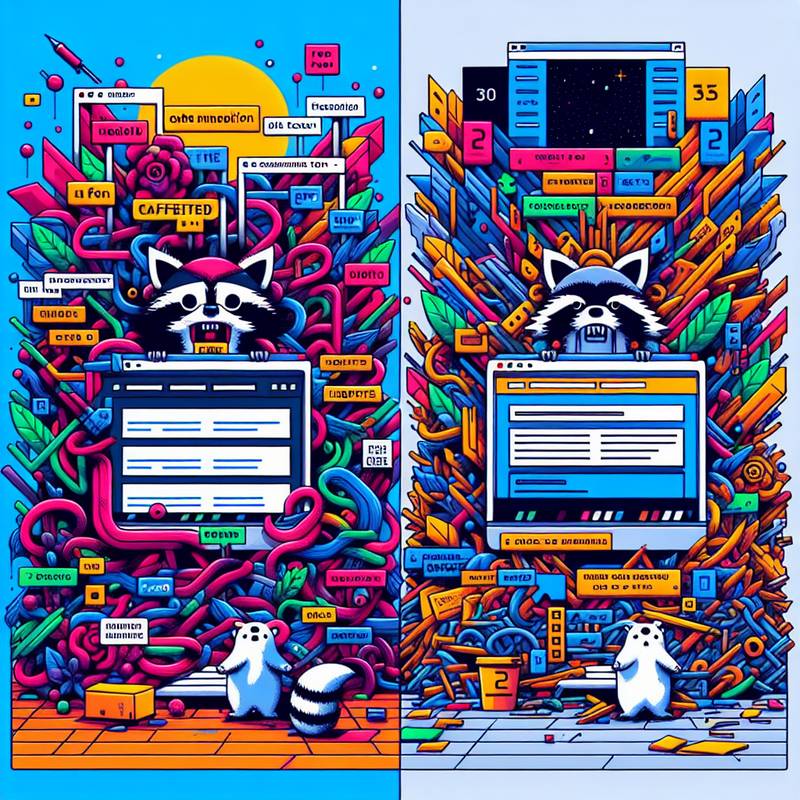 Have you ever visited a website and felt like you were trapped in a maze designed by a caffeinated raccoon with a flair for chaos? That’s probably due to the classic web design misstep: using ten different fonts and thirty-two colors in one layout. It’s not a design—it’s a digital ransom note.
Have you ever visited a website and felt like you were trapped in a maze designed by a caffeinated raccoon with a flair for chaos? That’s probably due to the classic web design misstep: using ten different fonts and thirty-two colors in one layout. It’s not a design—it’s a digital ransom note.The Fix: Embrace restraint. Standardize your website’s typography and color palette. Pick two fonts max: one for headlines, one for body text. Choose a consistent color scheme—three main colors is plenty. Your goal is not to assault the senses, it’s to guide the user smoothly through your content without making them feel like they’re being punished for their internet curiosity.
Remember: consistency isn't boring, it’s professional. Good design isn’t about shouting your message like a car dealership commercial; it’s about whispering it with enough style and clarity that people actually want to lean in.
And for the love of all that is digital and holy, resist the urge to make every button glow.
Loading...
webdesignlistings.org (c)2009 - 2025